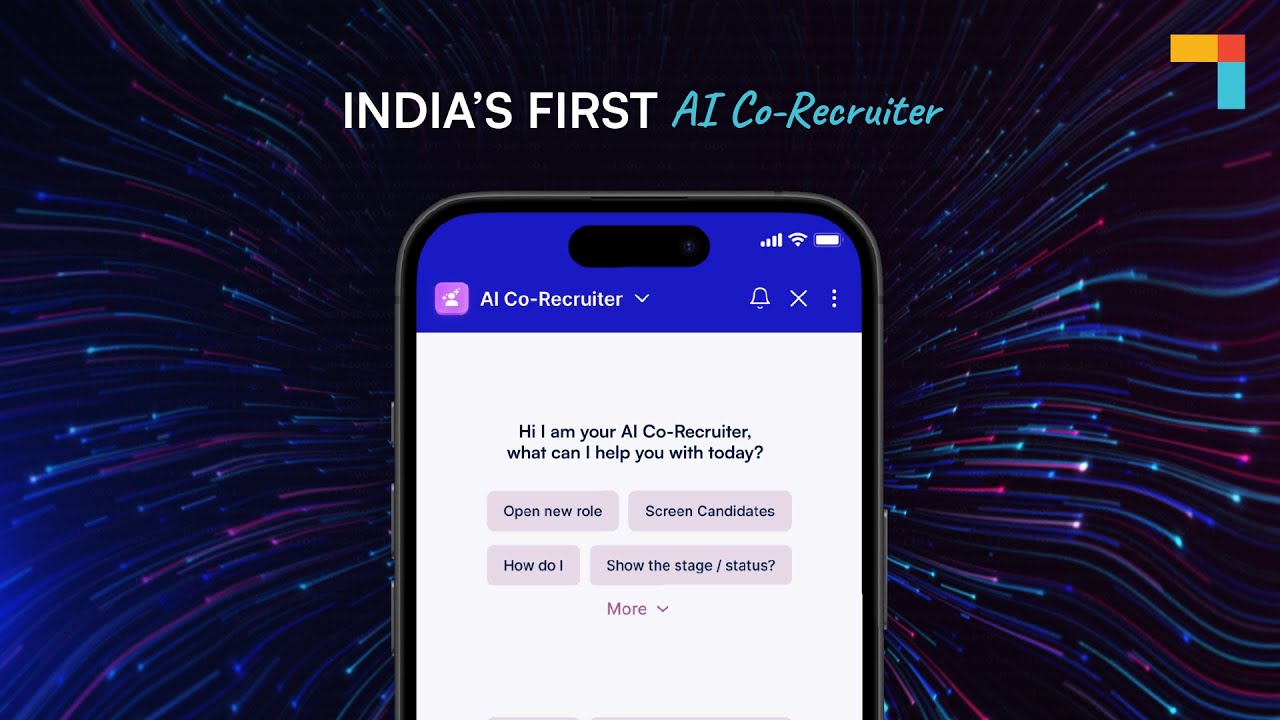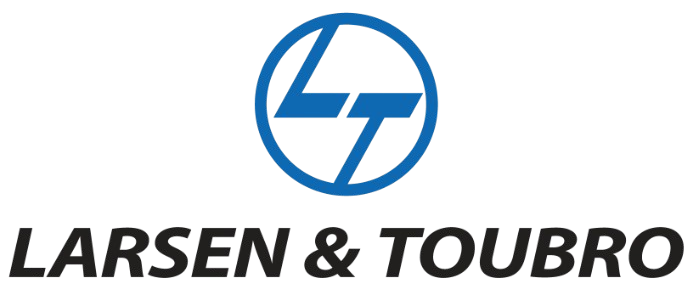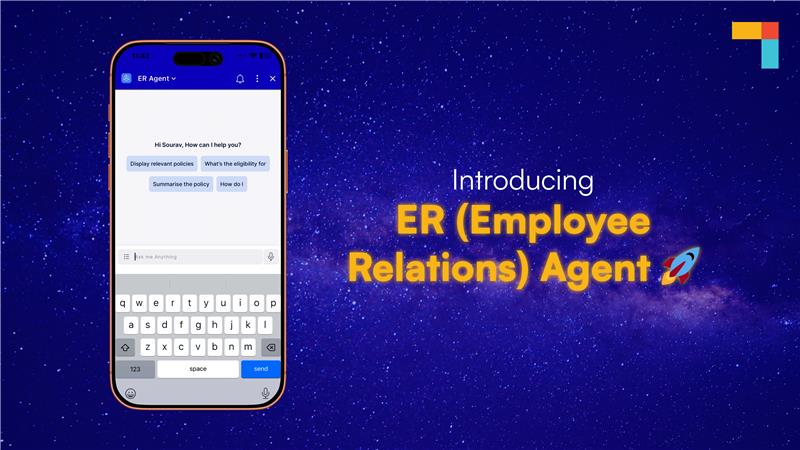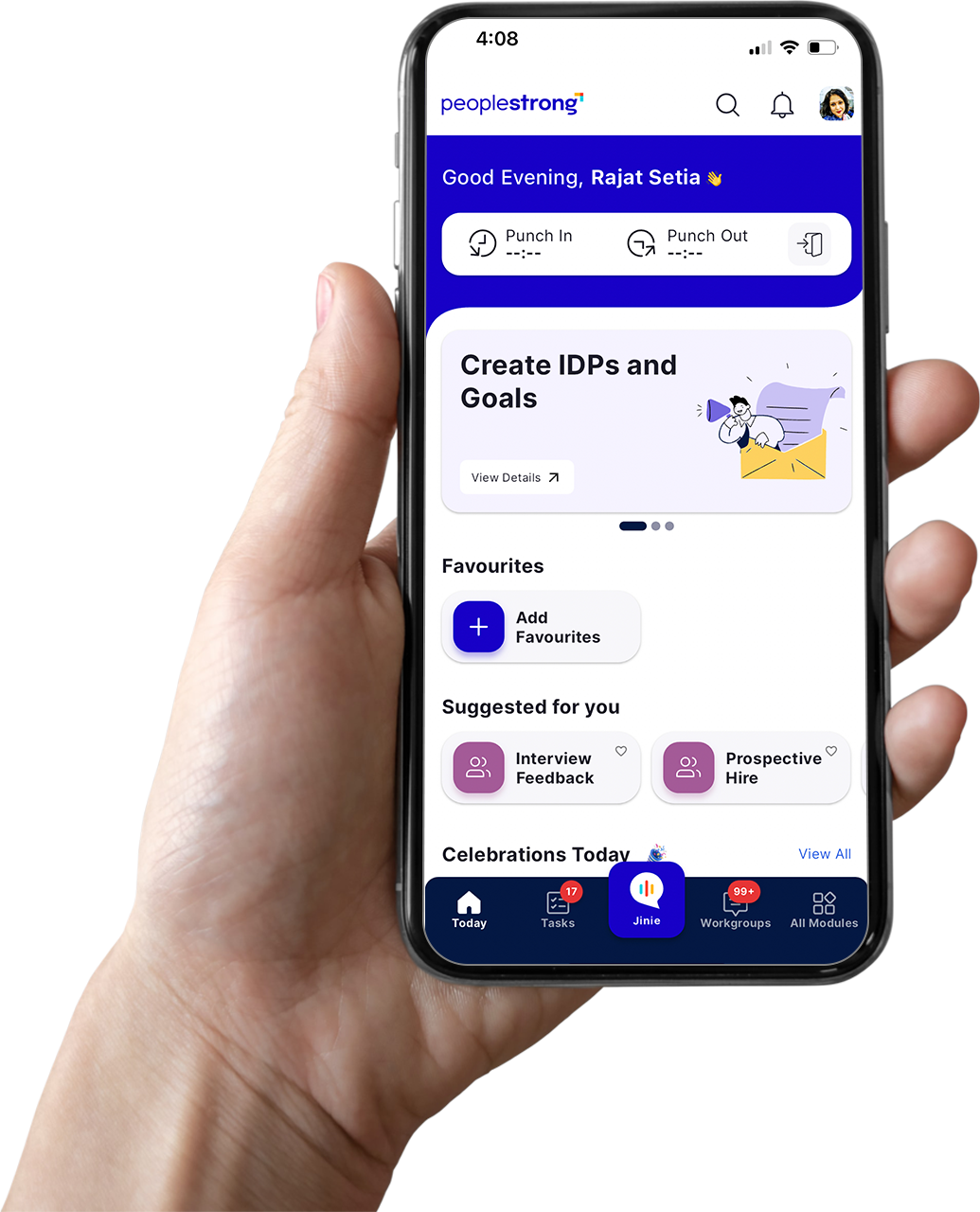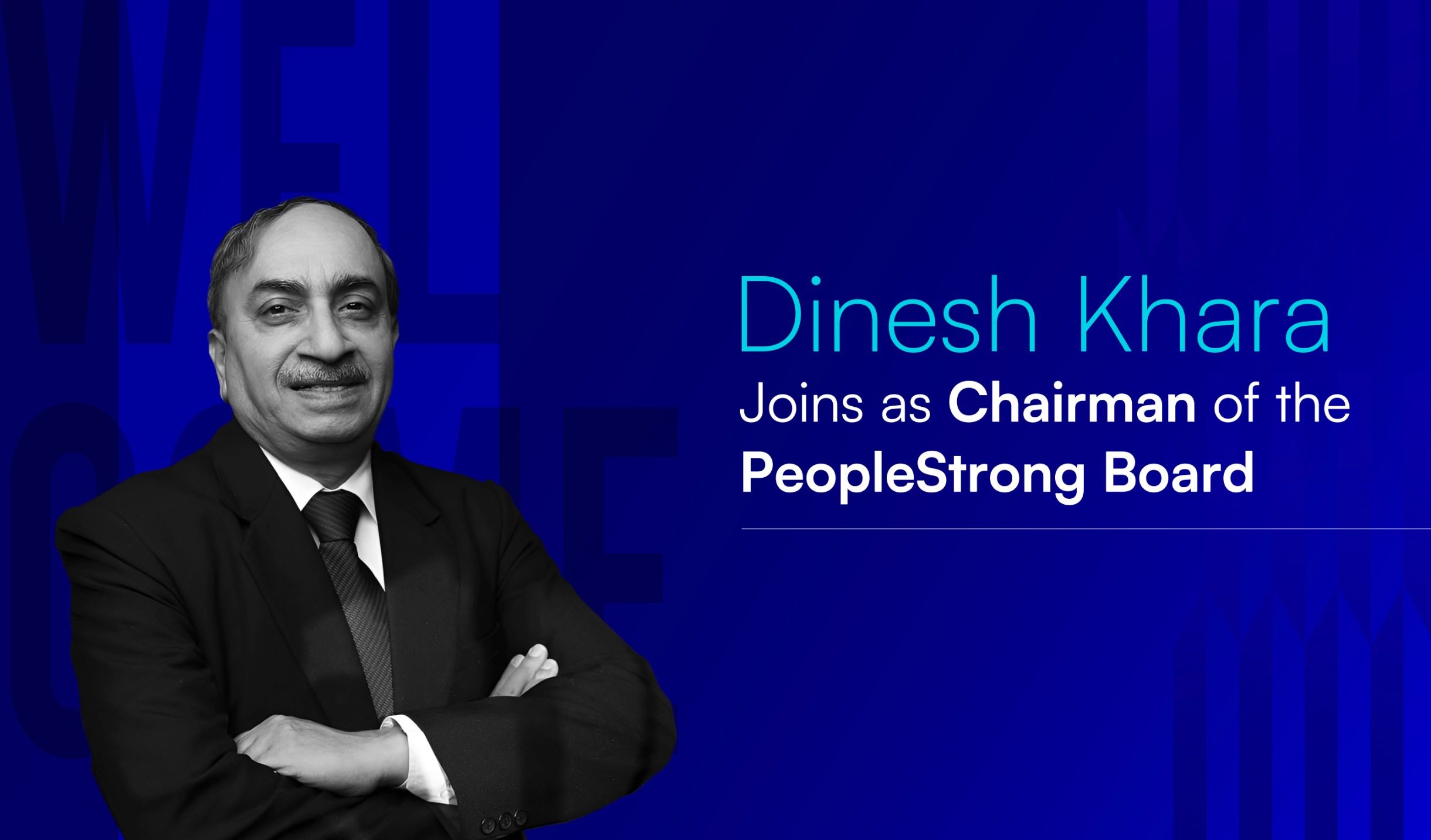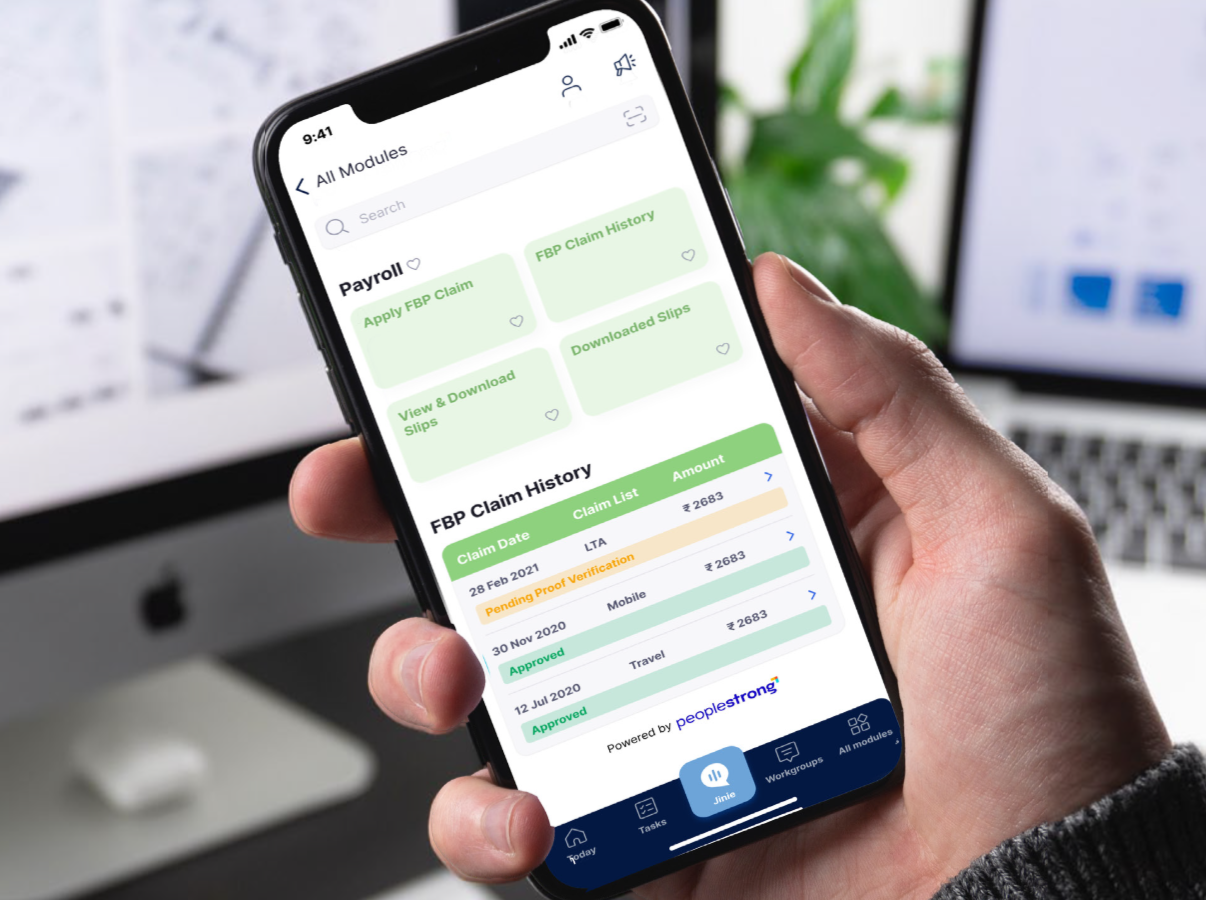42% of HR professionals say that increasing retention efforts is one of the most utilized recruitment strategies. Managers and leaders are too caught up in day-to-day routine, that they tend to overlook the people they work beside until it’s too late. Finding the right people can be hard. Training them and onboarding them can be hard too. Keeping them a good employee for the long haul can be harder.
However, the strongest and most successful companies benefit from long employee tenure. Become an excellent place to work by fixing any gaps in your retention strategy with the tips we share in this article.
Understanding Employee Retention
Employee retention is quite simple actually, it has 4 core areas that are also drivers of loyalty and retention, that when tapped into, can help you immensely.
| Area | Significance |
| Strategic narrative | A leadership style that empowers people and creates a vision for people to buy into |
| Engaging managers | Managers who coach their people, help develop their skills, and stand up for them when needed |
| Employee voice | A safe environment where people can express their views and not be punished for it |
| Organizational integrity | No say-do gap or incongruence between promise and execution |
When people feel psychologically unsafe or unvalued, they protest quietly, or subconsciously. They stop trying as hard. They act in ways that undermine leadership. They act against the organization to an extent. That’s exactly how someone becomes disengaged, and often at a huge cost.
When people’s identity is threatened, and ideas shut down or ignored, we respond to it by closing down and feeling like we don’t belong in that place. 77% of voluntary leavers either left within 3 months of searching for a new job or didn’t actively search for a new job at all.
Why is Employee Retention Important?
You don’t have to spend big bucks to keep people engaged and totally committed to your workplace. If you can check the right human connection hotspots, you can keep your people loyal to your cause. Employees who dislike their jobs tend to have high levels of daily stress and worry. When this builds up too much, they check out mentally first, before they resign, and it becomes incredibly hard to find the right replacement after they leave.
A winning customer experience (CX) is the direct result of the attitudes and behaviors of your employees. They come first and bring results with them, and not the other way around.
Simon Sinek, a renowned global leadership and business coach says, “The reason we stay or leave a job is because of how we feel about that job. People don’t just leave for money. When people feel loyal to the company, they turn down jobs, or they present their offer to you and ask if there’s something you could provide for them to match the numbers. The only thing that makes them want to have this candid conversation is if they’re seen and heard.”
It costs about 200% of a manager’s salary to replace them effectively, about 80% of a technical person’s salary to replace them, and about 40% of a frontline employee’s salary to replace them. When people leave in large numbers, the market takes note, your customers take note and feel something askew with your organization, so stock price and investments take a turn for the worse.
Every candidate you interview tends to enquire why their predecessors left, and your brand may find it difficult to attract A-list talent in the talent crisis economy we’re currently in. Without retention, the morale of existing employees is also affected. Seeing their colleagues and friends leave prompts them to leave, making the company more vulnerable. When competitors see your top performers leaving, they poach directly from your elite employee pool and make it harder for you to recover from a massive turnover.
When employees are treated badly and end up in a competitor’s brand, they may sabotage your brand name in the market, which makes it harder to regain the good standing you have. This is why keeping people happy and paying attention to employee retention is paramount.
Key Causes of High Employee Turnover
Caitlin Duffy, Senior Research Director, of Employee Experience at Gartner says, “Retaining key talent has become harder due to mistrust between employees and employers and fiercer competition in the labor market.”
Some of the biggest shifts that are causing retention struggles are that employee experience expectations are skyrocketing, workforce composition is changing, and skill needs for the market are maturing. 46% of HRBPs in a Gartner survey agree that employees at their organization are more likely to make demands about how fast they should grow.
36% of employees who were unhappy with their jobs didn’t talk to anyone before they made the decision to resign. People leaving is not an overnight decision – it’s a slow, steady buildup of absolute frustration, triggered by bureaucracy or not being connected to a larger mission.
36% of employees who were unhappy with their jobs didn’t talk to anyone before they made the decision to resign. People leaving is not an overnight decision – it’s a slow, steady buildup of absolute frustration, triggered by bureaucracy or not being connected to a larger mission.
Here are the 6 reasons behind retention challenges, as cited by SHRM Talent Trends study:
| Reasons | Significance |
| Salary not being competitive | When compensation does not reflect employees’ skills, market value, or effort, it fosters dissatisfaction, eroding loyalty |
| Employees’ personal reasons | Life changes, such as family needs, health issues, or relocating, can override even the most satisfying jobs |
| Poor management style and leadership behavior | Toxic or ineffective leadership undermines trust and morale, creating a hostile or disengaging work environment |
| Limited advancement opportunities | A lack of clear career progression or skill development leads to frustration and stagnation |
| Inability to offer personalized benefits and perks | Generic, one-size-fits-all benefit packages fail to meet diverse employee needs, causing disengagement |
| A lack of work-life balance | Results in burnout and resentment, driving them to prioritize jobs that promote well-being |
15 Effective Employee Retention Strategies
1. Install Mini Check-ins Every Meeting
Simon Sinek, a renowned global leadership and business coach says, “Sometimes people leave because they’re unheard, unseen, or they feel scared, or unprepared. That’s why asking how you can support them is important.”
Make it a practice to start every meeting with what support the team needs individually, and have each other offer support to help other teammates in need. Nothing is off-limits. If someone is unable to make designs interesting for a brochure and needs others’ input for it, that’s a valid ask for support and it’ll be given. This practice builds trust.
2. Get to Hear Stories of Valor From Employees and Use Them at The Right Time
Employees in customer-facing roles often have amazing stories of how they saved the day, and retained the most difficult customers, solved the trickiest problems, and saved the brand’s reputation. Similarly, employees everywhere have stories of their valor saving the day. As HR, join group meetings occasionally, or ask people to narrate these stories in town hall meetings, and in focus groups. Whenever you hear them, make note of them, so you can reiterate them and make your people feel appreciated, heard, seen, and valued at the right time.
3. Evaluate Employee-Manager Relationship of Different Teams
Research after research shows that when employees feel supported by their manager, they have a clear understanding of their organization’s career progression, and there’s a clear 20% positive impact in feeling supported. People don’t leave companies just like that, they leave bad bosses.
Some qualities and behaviors that tarnish employee-manager relationships are:
- Not being strong in conflict resolution
- Not having or showing empathy
- Not pushing back to others to stand up for their team
- Micromanaging
- Ignoring the team, and their needs
- Being rude to the team for no reason, and not apologizing after
- Not acknowledging others’ work, or contribution
- Shooting down any ideas the team comes up with
Take stock of how managers and their teams interact during common meetings, and check in with them individually on how they get along with each other. Take exit interviews seriously, and have detailed, empathetic discussions with the person leaving. For example, if a team has a tyrannical person as the manager, and is highly punitive, people stall their progress, in fear of retaliation, or public humiliation.
While they may be condemned for poor performance or not meeting targets, the real issue behind their slow contribution may be entirely different and noticeable only upon observation, and safe and candid conversations with HR. If the manager relationship isn’t healthy, it chips away at people’s dignity, and trust to the point they actively start looking out for a job and make the switch.
4. Show You’re Truly Inclusive
Showing you’re a DEI employer is one thing. But truly meaning what you say is another thing entirely. If you ever spot anyone making a nasty comment at someone from a different demographic than others – be it race, gender, language, age, sexual orientation etc, immediately condemn the behavior, and stand up for your people. Similarly, if you see people shying away from participating in fun events or get-togethers because of how are treated, take notice and take action on it.
If your compensation benchmarking exercise shows you pay the man differently than a woman working in the same job, same location, and title, make the pay structure equitable. Treating everyone as equals, regardless of differences, and making work a safe space for them not only shows you’re a DEI employer, it also strengthens trust in your people and they put you on a higher pedestal.
5. Assess Employees’ Important Lifecycle Moments
Integrate employee engagement into every stage of employees’ and managers’ lifecycle, and strongly emphasize wellbeing at work and in life. Important moments like, when they’re onboarded, 30 days after being onboarded, after their first big project with the company, after they’re confirmed, after their peers get promoted, their performance review, etc. Every lifecycle moment should be treated carefully, and emotions gauged to give people the support they need or to remedy any problem they have. This rules out the unsettling feeling of being unseen and builds trust in them.
6. Manage All Exits Well
How an employee leaves the company can affect their lasting perception of the organization. A well-managed, respectful exit process leaves employees with a positive impression, which can influence word-of-mouth and future talent acquisition. They may recommend the company to others or even consider returning (boomerang employees). A well-handled exit shows that the organization values employees even as they leave, which strengthens the employer brand.
Exit interviews provide critical insights into why employees leave and what improvements the company can make. How HR and leadership manage exits sends a strong message to remaining employees. A poorly managed exit can lead to distrust, anxiety, and lower engagement among current staff. On the other hand, treating departing employees with respect and transparency reinforces the company’s commitment to people-first values, boosting overall morale.
7. Switch Managers From Bosses to Coaches
Nobody wants to work for a boss anymore, especially the younger generations at work. They want a coach who will help them do things better, and improve their skills. Arrange for continuous manager and leadership development where you bring in coaches to coach your managers on people development, improving their own skills, and mentoring those under them, so they have the tools and training they need to be successful.
8. Make Recognition a Part of Your Everyday Routine
Cara Silletto, a Workforce Futurist and Employee Retention Expert says, “People can leave at any moment because everyone is hiring in the market. That’s why it’s important for every leader and manager to turn up the dial on their recognition meter and start thanking people when they truly show up.”
It takes only 2 seconds to thank someone for their job well done, a meeting well conducted, a presentation well delivered, prepared on time, or an internal issue taken care of diligently. The task doesn’t have to be huge to earn appreciation. Every simple task an employee does to the best of their ability, with the team’s interest in mind needs to be acknowledged. When you and the leaders start noticing the small gestures, activities, and achievements, people aim higher and start going above and beyond for your company.
When your managers peruse the work done by the team at the end of the day, have them make it a practice to send out an appreciative email, or Slack message immediately after they peruse the work. A few minutes spent recognizing good work will work well for employee retention.
9. Keep Listening to Employees
Chris White, TED Speaker and Positive Organizations Advocate says, “We need to continually invite people to speak up at work, by making invitations for their feedback a routine part of how we engage with them. This lays important groundwork that’s needed for those times when people have to speak up on issues that are hard for managers to hear.”
Implement a listening strategy and get feedback from all possible sources, throughout the year, so you can track problematic patterns and root them out before they become serious. When you and the leadership receive difficult feedback, embrace it, instead of becoming defensive and work out solutions for it. Seeing how their feedback changes the course of their work environment is a huge motivator for people.
10. Make All Types of Support Readily Accessible
Leanne Elliott, a Business Psychologist says, “If you’re experiencing issues in your organization and you think it’s your people, stop seeing them as a problem instead, see them as the solution – the very same people are central to that solution.”
People want to feel at home, safe, and secure physically and emotionally, for them to tap into their fullest potential. They also need to be able to access help whenever they need it. This is especially true for physical and mental health needs. Google’s active listening campaign is a fine example.
Anyone working at Google can volunteer to become an active listener and offer a listening ear to their colleague in need, with no strings attached. If you want to become one at Google, all you have to do is enroll yourself and undergo a 30-minute course, followed by a brief workshop to equip you with the skills you need to listen, process, and help someone venting out their heart to you.
When an employee of Google wants to talk to someone to share what they’re going through, all they have to do is spot a coworker with a Blue Dot badge, set up a meeting with them, and talk to them. The listener is not required to report or send any feedback, metrics, or data to anyone. It’s 100% confidential, and no one gets to know what they conversed.
Similarly, bring in a genius badge, or a brainy badge for someone who is willing to share their insights and help others at work. You can give out heart badges to those who are willing to listen to their colleagues in complete confidence. These gestures mean employees don’t have to go through a big system to get the help they need, rather, they can reach out to people they know and get first-level responses right. This improves trust and affinity phenomenally.
11. Let People See Their Part on the Value Chain
When you help employees find meaning and reward in their work, regardless of how close or farther they are to the bottom line, you can see higher productivity and enjoyment at work. People love being a part of something bigger than themselves – a cause they care about, or a mission that awakens their calling. It can motivate them to tap into their full potential, make it part of their life’s mission, and deliver the best to get them as close to the goal as possible.
Showing how each person makes a difference to your organization goes a long way in sealing their commitment to your organization. For example, you could consider each client your employees serve as their own customers. A collective of several employees’ customers make the customer base for the team and the revenue that comes from them. By showing that a team and every individual is responsible for putting food on the table for everyone in the company, you bring accountability and ownership.
Ensure every employee in every position knows the answers to the following questions:
- What’s the company doing?
- What value are you adding to the company to enhance its profitability?
- What are the company’s core values?
- What’s the purpose of your department and role?
- Why did you join the company?
- Why do you stay in the company?
When you ask these questions to employees and they answer them, you get an emotional response from them, which can be inherently motivating for them.
12. Support Employees Right When They Need You
If your employees need specific help from their managers, and aren’t getting it, and are only getting platitudes of ‘I’m always here for you’, they are going to distrust them very soon. If your employee wants help talking to hurtful customers, and their managers are only sending them motivational messages, they’re not going to appreciate the gesture. When this happens long-term, they feel unsupported and uncared for and leave. Instead, coach your managers to read verbal and non-verbal cues of stress, and need for help and pitch in where they are needed the most.
In this case, if the same manager joined the meeting along with the employee and helped diffuse the situation with the hurtful customer, that would mean a lot to the employee. The right kind of support at the right time will re-establish trust with employees.
13. Encourage Friendships at Work
When employees find their work and work relationships meaningful, employment is associated with high daily levels of enjoyment. If a person has the best person at work, they actually stay quite a few years at a company. The friendship adds meaning to their life at work. They can also decentralize support and make it easier for people to share what’s on their minds, access help, and have a compassionate ear to listen to them. This leads to increased psychological safety and cements the fact that there’s always someone they can relate to in the company.
Although there’s a common saying that there are only colleagues in the workplace, no friends, we all can agree that there are several people who have found best friends in the workplace who stayed with them, supported them, and watched them grow. A healthy workplace that allows group work, and scope for socialization where people can truly dissociate from work and form relationships will always be beneficial to the company in terms of productivity.
Arrange casual, comfortable furniture near the elevator, water cooler, between departments, the in-office pantry, and other places where people tend to cool off from work. Install mirrors in the hallway, or near the elevators so people stop to talk to each other.
Similarly, open up your office layout to allow for glass doors or fluted glass as much as possible, and fewer closed-off offices, so people get more chances to interact with each other. Conduct more non-work events for employees to forge meaningful relationships with each other, and spend quality time together, such as experiential training, team building activities, etc.
14. Show That You Trust Employees
Most organizations have trust as one of their core values. But when an employee asks for their laptop to be replaced because it’s not working right, and they have to jump through hoops to get approval from 15-20 people before the IT team sends them one, it doesn’t show a lot of trust. Helping them work independently as functional adults and competent human beings is fundamental to making people feel valued. If people are constantly micromanaged, they will pick up on the cue that they aren’t trusted and will find ways to leave.
Show your people you trust them. Find the right people and delegate the right tasks to them, and while doing so, ensure they have all the tools necessary to accomplish them. Be the bridge between cumbersome approvals and action, and show them you put your entire trust in them to watch them flourish. It makes and keeps people happy in the organization.
Metrics to Track
Ideally, a 10% turnover is ideal, a 20% turnover is average, and a 35% or higher turnover is excessive. To start with, compare your current turnover against last year’s turnover and that of the year before. Next, focus on the loss of employees to competitor companies, and conduct exit interviews to assess the real reasons behind people who make the switch.
Also, look at how many exit requests have you converted to staying with your organization. How many are you losing prematurely or unnecessarily? Are there common themes for people leaving you? Understand the why during exit interviews.
| Metrics | Particulars |
| Employee Turnover Rate | (Number of separations during a period ÷ Average number of employees) × 100 |
| Time to Fill Vacancies | Total days to fill open positions ÷ Total number of positions filled |
| Employee Tenure | Total years of service for all employees ÷ Total number of employees |
| New Hire Retention Rate | (Number of new hires remaining after a set period ÷ Total number of new hires during that period) × 100 |
| Retention Rate | (Number of employees remaining at the end of a period ÷ Number of employees at the start of the period) × 100 |
| Cost of Turnover | (Separation Costs + Vacancy Costs + Replacement Costs + Training Costs) ÷ Number of Employees Lost |
Suggested Read:
Cost per Hire: Definition, Formula, and Calculation
Conclusion
PeopleStrong can be a game-changer in tracking, remediating, and improving employee retention. With interconnected modules and AI-powered engines, you can monitor key retention metrics like turnover rates, employee engagement scores, and absenteeism in real-time.
Additionally, PeopleStrong’s AI-driven insights enable HR teams to proactively address concerns, streamline onboarding, and offer personalized development opportunities. By automating processes and providing a 360-degree view of employee life cycles, PeopleStrong empowers organizations to foster a more engaged and loyal workforce.
Contact us for a quick product walkthrough today!
